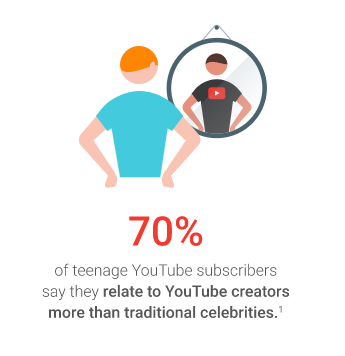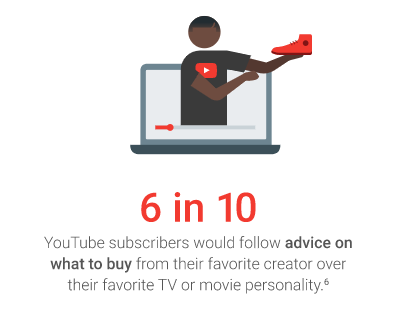Influencer marketing is a relatively new phenomenon. Even though this trend only recently burst onto the scene, it has taken over the industry. Successful influencer marketing today is completely different from when it first started and it will continue to change as time goes on.
Early Influencer Marketing
During the early stages of influencer marketing, all the focus and investment centered on the celebrities and influencers with the largest following. Selena Gomez and Kim Kardashian were pioneers of the influencer marketing industry and continue to rake in money for it. In fact, an article from US Weekly discovered that “brands will pay up to $500,000 for a campaign on Kim Kardashian’s Instagram.” As the trend has grown everyone wants a piece of the action.
Influencer marketing has exploded, and it’s not stopping soon. In a report from Influencer Marketing Hub, influencer marketing has the potential to be worth $10 billion by 2020. What’s more incredible is that the value to brands is sky-high. For every one dollar spent on influencer marketing the average company generates $5.20 in earned media coverage, and some companies are even making $18 for every $1 spent. Influencer marketing is too big to ignore.
How has influencer marketing changed?
Celebrities were the original influencers, but that has since changed. One of the biggest shifts we’ve seen is the rise of niche influencers. There are beauty influencers, fashion influencers, lifestyle influencers and many more. These niche influencers are more valuable to brands than any celebrity. The reason being, celebrities become influencers because they are famous, but niche influencers become famous because they create content their audience loves, and their audience trusts their opinion.
Trust is the key word in that last sentence. As influencer marketing has grown consumers have grown to trust niche influencers more than they trust celebrities. In fact, “70% of teenage YouTube subscribers relate to YouTube creators more than traditional celebrities and 60% of YouTube subscribers would follow advice on what to buy from their favorite [content] creator over their favorite TV or movie personality.”


Beyond the change in who influencers trust, we have also seen a massive shift how influencers do their job and push content to their audience. Instagram is the dominant app for influencer marketing, but other apps like YouTube continue to grow and foster a larger presence. YouTube is the second largest search engine in the world and receives roughly 30M visits every single day. People watch almost 500 million hours of videos on YouTube each day!
We know people spend a lot of time on YouTube. And younger generations trust YouTubers more than traditional celebs. But does that mean YouTube influencers are effective? Yes, yes, it does. A study from Carat found that 86% of the top 200 beauty videos came from influencers. Across ten niche categories tested, working with a YouTube influencer increased consumers’ purchase intent.
Where are we going?
Influencer marketing as we know it could very well disappear just as quickly as it burst onto the scene. Businesses must realize that too much content isn’t necessarily a good thing. In fact, the 2019 State of Influencer survey discovered that 46% of influencers have at least seven clients.
The authenticity and trust influencers enjoy can fade quickly. The influx of content has caused many consumers to ask themselves, “Is this just another advertisement or an actual opinion?” In a report from Forrester, marketing professionals expect “people will ascribe no more trust to influencers’ branded content than to brands themselves.”
Influencer marketing started with celebrities, then it became niche influencers, so where do marketers go from here? The answer, micro-influencers. Scrunch describes a micro-influencer as “someone who has an audience with a follower base of over 2,000, but less than 50,000 on a particular social media channel, usually with a focussed passion, topic or niche market.”
Just as followers are more trustworthy of niche influencers than celebrities, consumers are more trustworthy micro-influencers than larger niche influencers. Micro-influencers have personal connections with their followers. This allows consumers to have a lot of trust in them. Micro-influencers have higher engagement rates and are actively working for your brand by answering questions and responding to comments. This goes a long way towards creating greater trust between your product and their audience.
The role of influencers is all about leveraging trust and authenticity to achieve an end-goal. The big celebrities may have millions of followers and millions of likes on their posts. But for influencer marketing, that may not be the best practice. Instead, try to find people that have a strong rapport with their audience. This organic connection is what customers today want to see.

